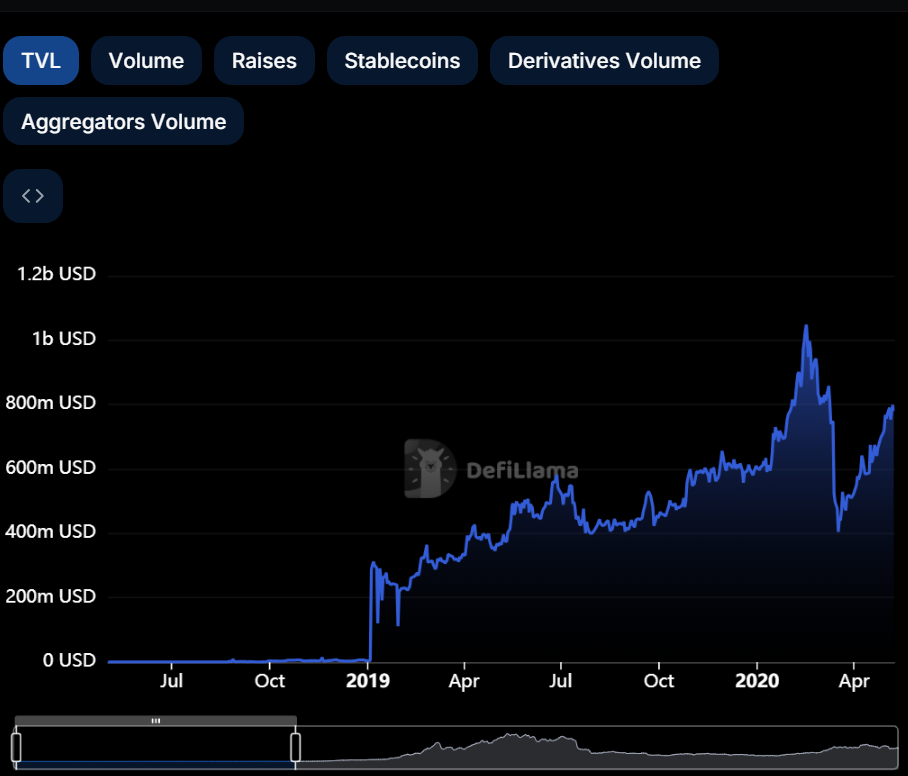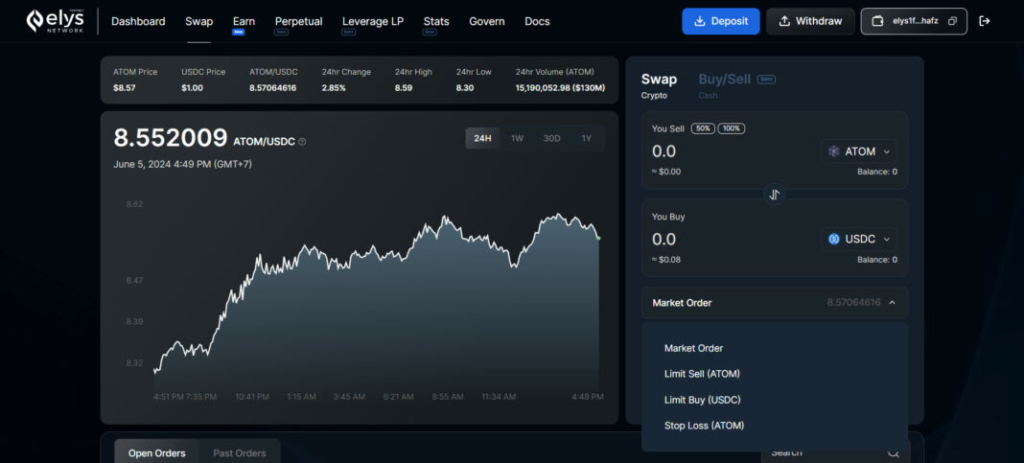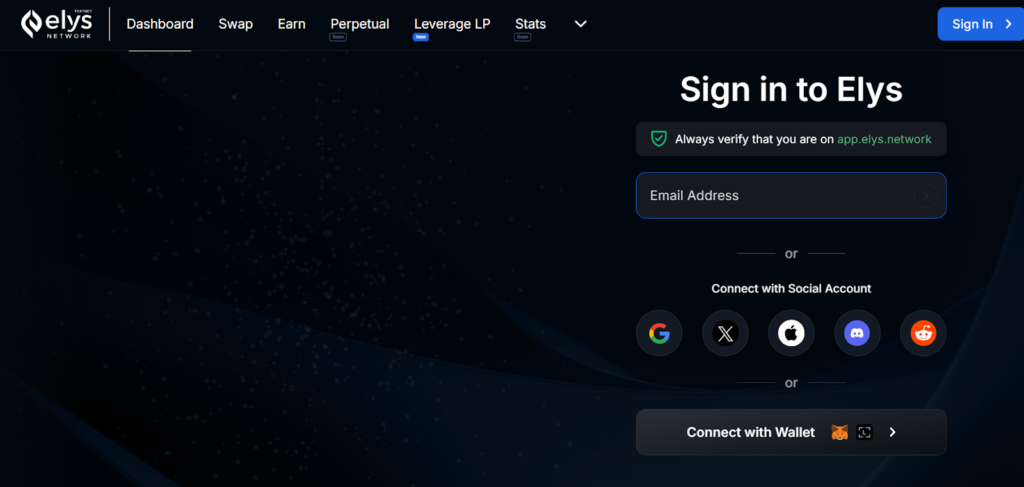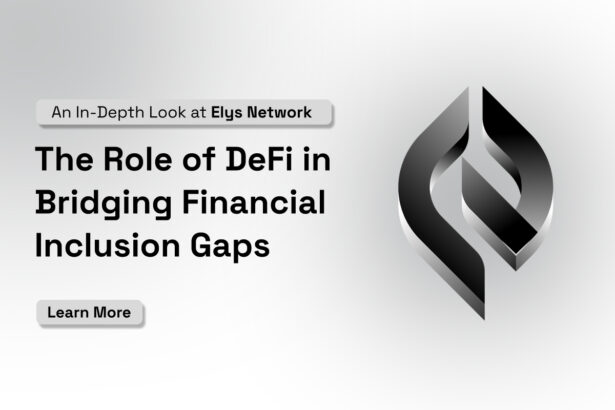Financial Inclusion has been a global imperative that remains unmet for billions of people over the years. It is an effort to provide access to useful and affordable financial services to all individuals and businesses.
- Understanding Decentralized Finance and It’s Impact on Financial Inclusion?
- DeFi’s Impact on Financial Inclusion
- Financial Inclusion through Elys Network: A Case Study
- Consolidation of Liqudity Accross Blockchains
- Integration with the Cosmos Ecosystem
- Native Bitcoin and Solana Staking
- Perpetual Trading
- ETF-Style Multi-Asset Index Pools
- Sustainable Rewards Mechanism
- Incentives for Network Participation
- User-Friendly Interface of Elys Network
- CEX-Like Experience
- Advanced Trading Options
- Simplified Onboarding
- Chain and Wallet Abstraction
- Inter-Blockchain Communication (IBC)
- The Future of DeFi and Elys Network’s Role
Traditional banking systems often fail to reach the unbanked and underbanked due to various limitations such as high operational costs and geographic inaccessibility.
Enters Decentralized Finance (DeFi), a financial system built on blockchain technology that has functionalities to bridge these inclusion gaps. DeFi operates independently of central financial authorities, allowing users to access financial services directly through digital platforms. This decentralization of financial services can eliminate many of the barriers posed by traditional banks, offering a new level of accessibility and inclusivity.
Speaking within this context, Elys Network has emerged as a key player in the DeFi space.
Understanding Decentralized Finance and It’s Impact on Financial Inclusion?
Decentralized finance or DeFi is an entire decentralized ecosystem of financial services that uses blockchain technology to create transparent and immutable transaction records. This ecosystem carries a wide range of financial services, such as lending, borrowing, trading and investing. Users or investors can earn interest on their assets, take out loans, provide liquidity as well as trade on decentralized exchanges (DEXs).
With lower barriers to entry and easy accessibility, the DeFi ecosystem is playing a major part in financial inclusion.
DeFi’s Impact on Financial Inclusion
According to the World Bank, approximately 1.7 billion people globally remain unbanked. Lacking access to the basic financial services that ar crucial for economic stability and growth (World Bank, 2021). The potential of DeFi to bridge financial inclusion gaps is immense.
Lower Barrier to Entry
DeFi platforms operate with lower fees and no minimum balance accounts. This makes them more accessible to a wider range of users, especially those with lower incomes.

As of July 2024, the Total Value Locked (TVL) in DeFi (Decentralized Finance) exceeds $90 billion. In terms of growth, the DeFi market is expected to expand at a compound annual growth rate (CAGR) of 46.8% from 2024 to 2032.
Banks on the other hand impose fees for account maintenance, transfers and other services. Making it difficult for households with low incomes to access financial services.
Accessibility & Decentralization
DeFi platforms are entirely digital and accessible from anywhere with an internet connection. Hence, allowing individuals in remote locations to participate in the global financial market. Banking infrastructure, on the other hand, is either non-existent or difficult to access, leaving residents without essential financial services.
Additionally, DeFi platforms operate on a permissionless basis, allowing anyone to access them without needing approval from a central authority. This gives individuals the power to control their financial futures and ownership.
Amid this surge in the growth of DeFi, Elys Network is one of the best platforms for both new and experienced users to start their crypto journeys. Its universal layer of liquidity provides access to a larger part of the DeFi ecosystem. With chain abstraction and wallet abstractions, the network has almost become synonymous with a user-friendly interface.
Financial Inclusion through Elys Network: A Case Study
Elys Network operates as an all-in-one Layer 1 app-chain in the DeFi ecosystem. The network promotes interoperability in the world of DeFi. It does so thanks to IBC integration that allows different blockchain networks to communicate and interact with one another.
This interoperability is crucial for providing users access to a wider range of financial services across different blockchain networks. Elys can offer its users more options and flexibility, thereby lowering barriers to entry to the DeFi ecosystem.
Elys Network is nothing but a “Universal Liquidity Layer” which also can be the cornerstone of financial inclusion globally in many ways. Let’s take a look at how it does that.
Consolidation of Liqudity Accross Blockchains
Elys Network aggregates liquidity from various blockchain ecosystems, including Bitcoin, Ethereum, Solana and Cosmos. By doing so, it creates a unified liquidity pool that users can access. This also helps the users access a large number of assets and reduce their slippage.
The aim here is to help users achieve more efficient price discovery and provide more consistent liquidity across trading pairs.
Integration with the Cosmos Ecosystem
Built using the Cosmos SDK, Elys Network has seamless integration with other blockchains within the decentralized ecosystem. This interoperability allows users to interact with multiple blockchains effortlessly, increasing accessibility to financial services. The use of Inter-Blockchain Communication (IBC) protocol facilitates secure asset transfers between Elys Network and other blockchains.
The integration with the Cosmos ecosystem and the use of IBC protocol for frictionless transactions across different blockchains. This feature increases liquidity and diversifies available assets and applications making financial services more inclusive.
Native Bitcoin and Solana Staking
Elys Network allows users to stake native Bitcoin and Solana, among other assets, providing a one-click liquid staking option. This feature enables users to earn passive yields ranging from 10-20%, making it an attractive option for those looking to generate income from their assets.
Users who stake their assets (such as Bitcoin, Solana, or USDC) on Elys Network can earn rewards ranging from 10-20% annual percentage yield (APY).
This staking is “liquid,” meaning users can still use their staked assets within the DeFi ecosystem without needing to unstake them. This model provides a dual benefit of earning staking rewards while maintaining asset liquidity.
Staking rewards are typically distributed in the form of ELYS tokens. The exact APY can vary depending on the asset staked and market conditions.
Perpetual Trading
The platform is planning to launch its perpetual trading options soon, allowing users to speculate on future prices of cryptocurrencies without the need to hold the actual asset.
These advanced trading options cater to various user needs and preferences.
ETF-Style Multi-Asset Index Pools
Elys Network allows users to create and invest in diversified portfolios of assets, similar to exchange-traded funds (ETFs).
These multi-asset index pools track the performance of specific indices or sectors, helping users diversify risk and making investment more accessible. Users can benefit from the growth of multiple assets simultaneously by investing in these index pools and spreading their risk across a diversified portfolio.
Sustainable Rewards Mechanism
The platform generates non-inflationary yield from multiple sources, which is distributed in USDC via participant rewards. This sustainable rewards mechanism ensures long-term value accrual for network participants including liquidity providers, node operators and delegators.
Rewards for liquidity providers are distributed in both USDC (as a stablecoin reward) and EDEN tokens. The rewards are proportional to the amount of liquidity provided and the duration for which it is staked in the pool.
Incentives for Network Participation
Elys Network’s economic model includes incentives for community participation such as governance voting, protocol upgrades and participation in decentralized autonomous organization (DAO) activities. Participation in these activities is rewarded with ELYS and sometimes incentives in EDEN to promote an active and engaged user base.
The platform ensures that participants receive value that is not subject to the volatility typical of cryptocurrencies by rewarding users in a stablecoin like USDC. At the same time, the issuance of ELYS and EDEN tokens ties users directly to the success of the network.
Elys Network isn’t just participating in the blockchain revolution, it’s leading it. Our ‘Universal Liquidity Layer’ represents more than a technological breakthrough, it’s a gateway to financial empowerment for billions worldwide.”
Founder of Elys Network
Above we read how the Elys network helps in bridging the financial inclusion gaps. The list, however, does not end there. A large part of reducing the gap between unbanked and unaware people is to be accredited to Elys network’s ‘User-Friendly’ interface.
User-Friendly Interface of Elys Network
ELYS Network offers a user-friendly gateway into the blockchain. Simplifying cross-chain interactions with its intuitive interface, it offers a bundle of amazing developer tools.
Some of its unique features which make the platform simple and intuitive are listed below.
CEX-Like Experience
Elys Network offers a trading experience that is similar to top-tier centralized exchanges (CEXs), making it easier for users accustomed to centralized exchanges to adapt to DeFi. This includes features like market orders, limit orders and stop-loss options all presented in a familiar layout.

This familiarity reduces the learning curve for new users and makes the transition from traditional financial systems to DeFi smoother
Advanced Trading Options
The platform includes advanced trading options such as spot and perpetual trading, leverage lending and multi-asset index pools. These features are presented in a user-friendly manner, making complex DeFi operations more accessible to a wider audience.
Simplified Onboarding
Users can log in using various methods, including email addresses, and social media accounts (such as X, Google, Apple, Discord, or Reddit). Alternatively, users can use noncustodial wallets like Keplr, Leap, or Cosmostation. This variety of login options reduces the complexity of onboarding and makes it more accessible to new users.

The Network eliminates the need for users to remember complex wallet addresses or private keys By allowing users to log in with social media accounts. This makes the onboarding process more user-friendly.
Chain and Wallet Abstraction
Elys Network uses chain abstraction to provide easy access to liquidity across different blockchains at a single click. Chain abstraction in Elys Network involves simplifying the interactions between different blockchains.
Instead of users having to manually connect to and manage different networks (e.g., Ethereum, Solana, or Cosmos), Elys Network abstracts these underlying technical details. This means that users can interact with multiple blockchains through a single, unified interface without needing to understand the specific mechanics of each chain.
For example, a user who wants to trade an asset on Solana while holding Ethereum-based tokens doesn’t need to worry about switching networks, wrapping tokens, or using different wallets. The chain abstraction handles all the complexities behind the scenes. Hence, allowing the user to focus on their transactions rather than the technical details of cross-chain interoperability
Wallet abstraction further simplifies the user experience by allowing users to manage their assets across different blockchains using a single wallet interface.
Traditionally, interacting with multiple blockchains would require users to manage separate wallets for each network. Each with its own set of private keys, addresses, and interfaces. This process can be cumbersome and error-prone, especially for users who are new to DeFi.
Elys Network’s wallet abstraction feature enables users to access and manage their assets from different blockchains through one unified wallet. Users can deposit, withdraw, and trade assets from various blockchains without leaving the platform or needing to switch between different wallets.
Inter-Blockchain Communication (IBC)
IBC allows independent blockchains to exchange data and value without requiring a centralized intermediary. This is accomplished through a set of standardized protocols that manage communication between chains.
This cross-chain capability is crucial for Elys Network to allow the platform users to pool liquidity from different blockchains and offer users a more connected and comprehensive DeFi experience. For eg, Users can send tokens, data, or other digital assets back and forth across multiple chains.
Combining these features, Elys Network creates a user-friendly interface that simplifies the transition from traditional financial systems to DeFi. Making it more inclusive and accessible to a wider range of users.
The Future of DeFi and Elys Network’s Role
Elys Network is a key player when it comes to using DeFi to close the financial services gap globally. Based on its user-centric designs tit can provide easy access to a diverse range of financial services across multiple blockchains.
By doing so, Elys Network is democratizing finance and creating a way for a more inclusive and equitable financial ecosystem. This approach could significantly alter how we interact with financial services making them accessible to anyone, anywhere and at any time.



















